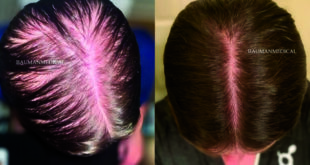By Renee Chillcott, LMHC
 Have you heard terms such as “biological clock” or “biorhythms”, or maybe you’ve heard stories of babies “getting night and fay mixed up”? These are a few examples of a biological phenomenon called Circadian Rhythm, but what exactly is it and how does it affect me?
Have you heard terms such as “biological clock” or “biorhythms”, or maybe you’ve heard stories of babies “getting night and fay mixed up”? These are a few examples of a biological phenomenon called Circadian Rhythm, but what exactly is it and how does it affect me?
Your Circadian Rhythm is the pattern your body follows based on a 24-hour day. It’s your body’s internal clock and it not only tells you when to go to sleep and wake up, but also controls biological processes such as hormones, digestion and body temperature.
Circadian Rhythm coordinates the physical and mental systems in your body and is controlled by the area of your brain called the hypothalamus. It is also controlled light, thus causing our brains to naturally change based on day and night.
Throughout our lives, this biological clock goes through natural changes and adjustments. We can see this most clearly with sleep/wake schedules.
Babies – it takes about 3 months for the rhythm to develop and for babies to get on a “schedule” of waking and sleeping. This continues to develop during childhood where “bedtimes” are established and daytime naps transition and aren’t needed.
Teens – during the teen years, the rhythm will shift again. Teens require the same number of hours to sleep, however the “bedtime” adjusts as during the teen years, the rhythm shifts to later got to sleep times and later wake up times.
Adulthood – as teens progress to adulthood, the rhythm will shift again, and sleep/awake times are typically dictated by external factors such as jobs and family.
Later Adulthood – As we progress through adulthood, our rhythm changes again and earlier sleep and earlier wake times tend to prevail. The number of hours needed to sleep will shorten as well.
Even though this rhythm is a natural occurrence, there are several factors that can cause it to be “out of sync”.
- Food intake
- Stress
- Physical activity
- Temperature
- Forced waking from work/school
- Travel
- Poor Sleep Habits
- Mental Health/Brain conditions
- Time changes (moving to different time zones, daylight savings, etc.)
When Circadian Rhythm is disrupted, there are several diagnosis and conditions that can follow. Because the rhythm affects physical and mental processes in the brain, the dysfunction that occurs when the rhythm is disrupted can range from physical such as:
- Digestion/Gastrointestinal problems
- Metabolism Problems
- Lack of energy
- Delayed wound healing
- Changes in hormones such as cortisol or melatonin
- Mental changes can also occur:
- Memory loss
- Anxiety
- Depression
- Psychosis
- Adrenal fatigue
- Attention/Focus difficulties
- Establishing, restoring or resetting your Circadian Rhythm can be achieved through some behavioral interventions such as:
- Sticking to a daily routine
- Going outside to get natural sunlight/physical activity
- Good sleep hygiene/routines
- Limiting exposure to artificial light at night/screens and blue light
- Avoiding stimulants such as caffeine or nicotine in the evenings before sleep
But what do I do if behavioral interventions don’t restore my rhythm and I’m experiencing dysfunction?
Speak to your healthcare provider. There are times when medication or medical treatments can help. Neurofeedback is another way you can get help. Neurofeedback is an alternative/non-medication approach that uses EEG to teach your brain how to restore its natural rhythm, improve regulation, and relieve symptoms related to dysfunction.
What is Neurofeedback?
Neurofeedback, also known as EEG biofeedback, has been studied and practiced since the late 60’s. It is exercise for your brain by allowing you to see the frequencies produced by different parts of your brain in real-time and then through visual and auditory feedback, teaches the brain to better regulate itself. It can help restore a wider “range of motion” in brain states, much like physical therapy does for the body.
While the client sits comfortably watching a movie or pictures appear on the screen (a calm and focused state), the EEG equipment measures the frequency or speed at which electrical activity moves in the areas where electrodes have been placed. This information is sent to the therapist’s computer. The therapist is then able to determine what frequencies are out of balance. For example, when the EEG shows that you are making too many “slow” or “sleepy” waves (delta/theta) or too many “fast” waves (high beta), the therapist adjusts a reward band to encourage more balanced activity. This encouragement or “reward” happens through visual recognition of the changes on the screen and the auditory reinforcement of “beeps”.
What types of conditions does Neurofeedback help?
Symptoms of these conditions, among others, can improve through Neurofeedback training:
• Anxiety • Sleep disorders • Depression • ADD/ADHD • Sensory processing disorder • Bipolar disorder
• Seizure disorders • Auditory/visual processing • Chronic pain/Fibromyalgia • Migraines/headaches
• Traumatic brain injuries • Stroke • Cognitive decline
• Peak performance • Oppositional defiant disorder
• Rages/mood swings • Attention/focus/concentration • Reactive attachment disorder • Autism/Asperger’s
• Learning disabilities • Obsessive compulsive disorder
What is a QEEG (quantitative EEG) or brain map?
The QEEG is a quantitative EEG. It’s also called a brain map and does just that…it gives us a map of what is going on with the entire brain at one time. We attach electrodes to the whole head, 19 spots, and then record the brain waves with eyes open for 5-10 minutes and with eyes closed for 10 minutes. This recording is then sent to be read and analyzed. It can help us see what areas need to be addressed more efficiently than just training spot by spot.
How do I get started?
Getting started is easy. The Brain and Wellness Center staff will answer all your questions, and help you get scheduled. If you are wondering what services are best for you? We can help to determine that through telephone consultation.
Call, email or text message us today! Brain and Wellness Center, 5458 Town Center Road, Suite 13, Boca Raton, FL 33486. E-mail us at info@bocabraincenter.com, or text us at (561) 206-2706 or visit our website at www.BocaBrainCenter.com.
 South Florida Health and Wellness Magazine Health and Wellness Articles
South Florida Health and Wellness Magazine Health and Wellness Articles




